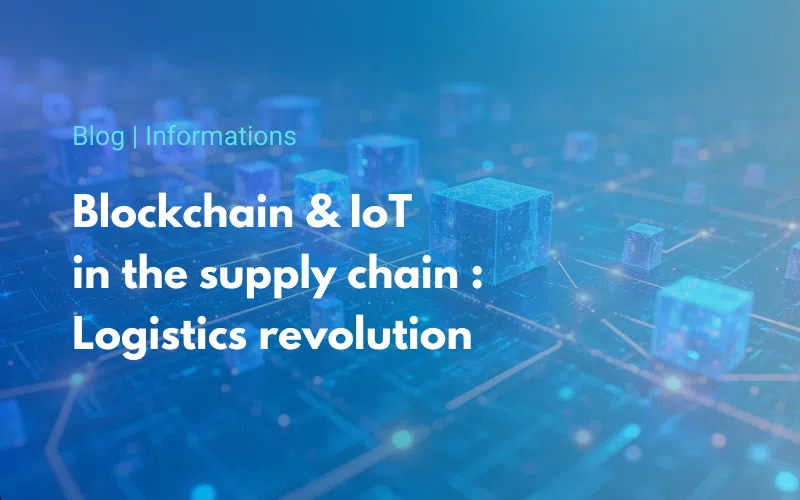
Blockchain & IoT in the supply chain: an introduction to their impact
Blockchain and IoT in the supply chain are no longer simply associated with cryptocurrencies. Today, they are transforming supply chain management by offering increased traceability, total transparency and a significant reduction in risk.
According to Market Research Future, thesupply chain IoT market could reach $495.58 billion by 2034, with annual growth of +19.5%.
Here, ELA Innovation takes a look at this technological revolution, from its foundations to its practical applications.
I. What is the IoT and what role does it play in the supply chain?
Defining the Internet of Things in the supply chain
TheInternet of Things (IoT) refers to a network of intelligent sensors capable of collecting, transmitting and analyzing data in real time. In logistics, these sensors are embedded in containers, vehicles or products.
The main benefits of IoT for the supply chain
- Real-time geolocation tracking of goods
- Monitoring of transport conditions (temperature, humidity, shocks)
- Supply chain anomaly alerts
- Route and inventory optimization using IoT data
Find out why you should choose Bluetooth Low Energy for industrial asset tracking
II. Blockchain in the supply chain: securing and certifying exchanges
How blockchain works for the supply chain
Blockchain is a distributed, transparent and immutable ledger that enables data or transactions to be stored securely, without intermediaries, which is particularly useful for supply chain management.
The benefits of blockchain in supply chain management
- End-to-end traceability of goods flows
- Certificate of authenticity and product origin
- Reducing fraud and adulteration in the supply chain
- Smart contracts to automate the validation of logistics processes
III. Blockchain and IoT: a powerful combination for optimizing the supply chain
The combined benefits of blockchain and IoT for supply chains
- IoT data integration secured by blockchain
- Real-time data traceability with proof of integrity via blockchain
- Automation reduces errors, disputes and costs
- Improving regulatory compliance in sensitive sectors (pharmaceuticals, agri-food)
This interoperability between connected sensors and blockchain registry offers a resilient, automated and trustworthy supply chain.
IV. Concrete use cases in the supply chain: Blockchain and IoT in action
1. Food traceability – Walmart & IBM Food Trust
Track food from field to plate in less than 2 seconds. Better management of product recalls and reduced waste.
2. Marine logistics – Maersk & TradeLens
Blockchain tracking of containers + IoT sensors for transport conditions. Reduce port delays and paperwork.
3. Luxury and anti-counterfeiting – De Beers
Each diamond is traced from the moment it is mined. The end customer verifies authenticity via immutable digital proof.
4. Pharmaceutical industry – Drug traceability
Cold chain monitoring via IoT, validation of each step by smart contract blockchain. Protection against counterfeiting.
Conclusion: Blockchain and IoT, the logistics revolution
The convergence of blockchain and IoT is transforming the traditional supply chain into an intelligent, reliable and optimized system. Companies that embrace this dual technology benefit from more agile, transparent and secure logistics.
With its Bluetooth beacons, ELA Innovation helps companies to achieve intelligent, automated traceability.
FAQ – Blockchain and IoT in the supply chain
What’s the difference between IoT and blockchain in the supply chain?
The IoT collects physical data from the field (location, temperature…), while the blockchain secures and certifies this data immutably.
What are the benefits of blockchain for logistics and the supply chain?
Transparency, security, traceability and automation via smart contracts.
How does the IoT improve the supply chain?
It enables real-time tracking, improved reactivity in the event of an incident, and better management of logistics flows.


